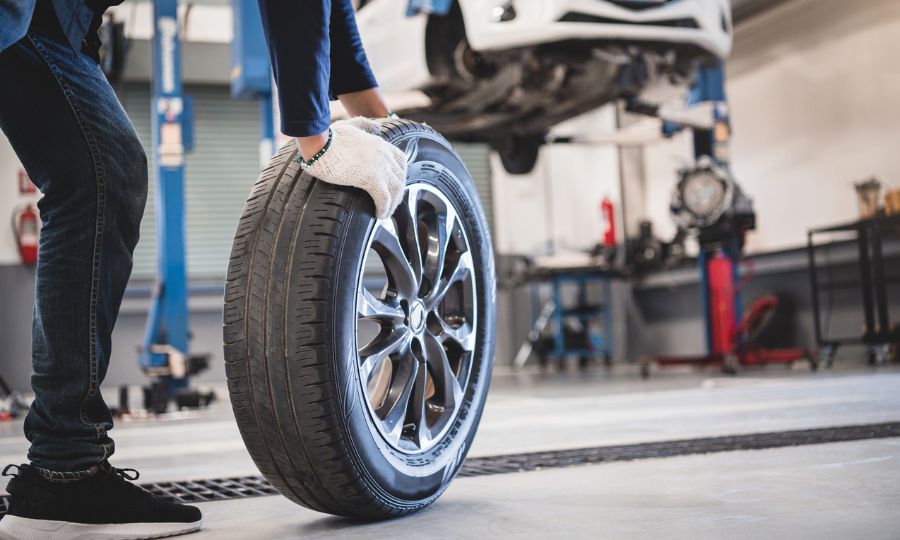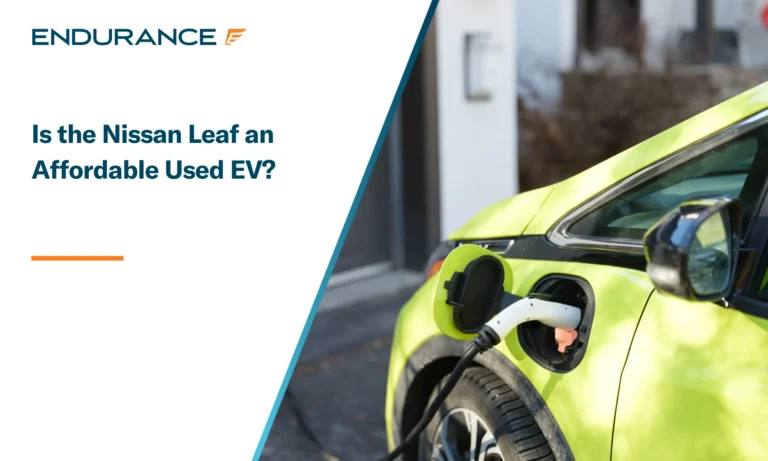Top 8 Maintenance Tips for Keeping Your Mercedes-Benz C-Class in Top Shape

Owning a luxury vehicle is a dream for many, but for some people, that dream becomes a reality. The Mercedes-Benz C-Class is as popular for its sleek aesthetic as it is for its smooth performance, but now you’ve got the keys. Keeping it in the best possible condition is no doubt top of your to-do list.
Not only does regular maintenance ensure a comfortable ride, but it’s also a great way to prevent mechanical failure (and the resulting repair bills). If you have any sort of warranty coverage, it’s also essential to carry out regular maintenance to keep your contract intact.
Follow our top maintenance tips for keeping your Mercedes-Benz C-Class in top shape, and keep on driving with confidence.
1. Understand Your Vehicle’s Maintenance Schedule
Without exception, every vehicle has a manufacturer-recommended maintenance schedule that can usually be found in your owner’s manual. This is what you’ll be expected to stick to in order to prevent any auto coverage from being voided, but that shouldn’t be your only incentive. No one understands your vehicle better than the people who made it, and they know exactly what you need to do to keep it running as smoothly as possible.
Many car manufacturers use a 30-60-90 schedule, meaning certain maintenance services need to be inspected, changed, or replaced at 30,000, 60,000, and 90,000 miles. The Mercedes-Benz C-Class, however, is not just any car. Absolutely packed with technology and power, there’s a lot to stay on top of, so recommended schedule service intervals look a little more like this:
| Synthetic motor oil replacement | Every 10,000 miles |
| Cabin dust/combination filter replacement | Every 20,000 miles |
| Brake fluid exchange | Every 20,000 miles |
| Wiper blades set | Every 10,000 miles |
| Spark plugs replacement | Every 50,000 miles |
| Engine air filter replacement | Every 50,000 miles
Every 40,000 miles |
| Transmission oil & filter replacement | Every 60,0000 miles (2015 or newer only) |
| Fuel filter replacement (diesel models) | Every 20,000 miles (2009-2014 only)
Every 50,000 miles (2015 or newer only) |
Please note that recommendations for model years may differ, so always make sure to consult your manual for specifics regarding your vehicle.
2. Regular Oil and Filter Changes
Cars may be getting more sophisticated, but engine oil isn’t getting any less important. The slick substance is crucial for keeping your vehicle’s mechanical parts lubricated. Without it, you won’t be going anywhere fast, so it’s important to change your oil and filter regularly. Many modern cars have a built-in reminder if the oil level gets low, but it’s smarter to stay ahead of that.
Consult your owner’s manual for the recommended timings, but also pop your hood every so often to check oil levels manually. Depending on its age, your Mercedes-Benz C-Class may have an electronic oil monitor rather than a traditional dipstick.
When the time comes to change your motor oil and filters, your owner’s manual will have all of the details on the specific types to use. It’s, of course, easiest to ask a professional to do this for you, but if you’re interested in saving as much money as possible, it’s something you can do yourself. Just make sure you have the right tools (e.g., an oil filter wrench and a wrench for your oil drain plug) and follow a reputable oil changing guide.
3. Brake System Maintenance
The importance of brake system maintenance can’t be emphasized enough. Without it, your brakes could ultimately fail, and we don’t need to tell you just how catastrophic that would be. Properly working brakes also puts less wear on your rotors, which translates to less money spent further down the line. At least one brake inspection/service per year is highly recommended, but (as always) consult your owner’s manual for the manufacturer’s recommended intervals.
This is one of the times where we’d always recommend a professional take a look, rather than doing things yourself. You really can’t take any risks when it comes to brake maintenance, and with brake fluid, brake pads, calipers, drums, and rotors to inspect and potentially replace, there’s a lot that could go wrong if you aren’t a trained mechanic.
4. Tire Maintenance

Tires are your only point of contact with the road. If anything were to go wrong with them while you were out driving, you could be left stranded at the roadside or (in the worst-case scenario) experience a significant accident. Just like your brakes, it’s highly important that you keep your tires in check, but thankfully this is easy to do by yourself for the most part.
The first thing you need to watch out for is your tire’s pressure (aka PSI). This must be kept at your manufacturer’s recommended level, which can always be found in your owner’s manual, and is sometimes printed somewhere in your vehicle—usually on the driver’s door jamb. Tires that are overinflated or underinflated have reduced performance and can wear much more quickly, so make sure to get the number right.
To promote even wear, it’s recommended that you have your tires rotated whenever you have your oil changed. Having an auto shop periodically check the alignment is also good practice, as this will naturally shift over time and can lead to issues with tread if not corrected. Finally, you can easily use a penny to check your tire’s tread is thick enough. Place it into one of the grooves upside down, and if you can see the top of Abe’s head, you need a new tire.
5. Battery Maintenance
While your battery isn’t usually a part of your manufacturer’s recommended schedule, that doesn’t mean that you shouldn’t do your best to maintain it. Your car won’t even start without a healthy power source under the hood, so it’s worth making sure yours is in good shape.
Most mechanics agree that you should have your battery tested once a year after it’s two years old if you live in a warmer climate or after it’s four years old if you live in a colder climate. Whenever you pop the hood, you should take it as an opportunity to check the battery’s connections quickly. If they’re showing any signs of corrosion, disconnect them and clean them with a battery brush.
With the rising popularity of working from home, many people are leaving their vehicles on driveways for extended periods of time. The computers in your vehicle are always draining energy, so it’s recommended that you take short drives regularly to allow your battery to recharge. Attaching your battery to a trickle charge is also an option, but be sure to use one with built-in circuitry that prevents overcharging.
6. Routine Inspections and Checks
There are plenty of inspections and checks that you can carry out yourself. The easiest way to remember to do these is to tie them in with another car-related activity, like filling up on gas or pumping your tires with air. Basic DIY checks should include the following:
- Oil level
- Tire PSI
- Tire tread level and wear
- Battery connector corrosion
- Wiper blade wear
- Coolant levels
- Windscreen fluid levels
Mercedes-Benz service dealerships recommend a professional inspection every year/10,000 miles traveled (aka Service A) and another every two years/20,000 miles traveled (aka Service B). Service A includes oil and filter replacement, the checking and correction of coolant, brake, power steering, windshield washer fluid, etc, plus wiper blade replacement. Service B includes everything from Service A, plus changing the brake fluid and the cabin dust/combination filter.
7. Using Genuine Parts and Certified Mechanics
Taking the DIY approach to maintenance tasks can, of course, save you some money on labor, but don’t be tempted to cut corners when it comes to components. While non-genuine parts may be cheaper in the short term, they’re more likely to fail prematurely and can even cause damage to the parts that surround them. For those with extended warranties, using unofficial parts can void your coverage, and that goes for any damage caused to related parts. Ultimately, what saves you a few dollars today could end up costing you hundreds (if not thousands) later down the line.
The same goes for using certified mechanics. Always make sure that any auto shops you use are ASE certified (or any other comparable accreditation) so that you can be totally certain the work they carry out will be of the best possible quality. This is another thing that vehicle service contract providers stipulate, so going to an uncertified mechanic really isn’t worth the minimal short-term savings you might benefit from.
8. A Top Tier Vehicle Deserves Top Tier Protection
Luxury vehicles are a joy to drive, but they’re expensive to buy and just as expensive to own. The unfortunate truth about luxury cars, in general, is that they’re some of the least reliable vehicles on the road, resulting in more unexpected trips to the auto shop and more unexpected repair bills. To make matters worse, luxury car components can be incredibly pricey, so not only are the repair bills more frequent, they’re much more damaging to your finances.
To combat these costs, drivers all over America are investing in extended auto warranties, which can foot the bill for repairs when the worst inevitably happens. Since opening our doors over 16 years ago, Endurance has helped over half a million people save serious money on the annual cost of car ownership. And we’re here to help you too.
We have a wide range of protection programs available aimed at all kinds of drivers. Our Supreme For Highline Vehicles plan is perfect for luxury vehicle owners specifically, covering select models from automakers like BMW, Jaguar, Porsche, Land Rover, Maserati, and Mercedes-Benz that are up to eight years old with fewer than 80,000 miles on the clock. All our base packages are fully flexible, so if something isn’t quite right for your needs and budget, our friendly team will tailor a bespoke plan that suits you.
On top of years of experience and award-winning service, we also offer some of the best benefits in the business. 24/7 roadside assistance, trip-interruption costs, and replacement travel reimbursement are included as standard with every Endurance plan. New members also get a year’s free access to our Elite perks, adding on tire repair/replacement, total loss protection, key fob replacement, and more. Just pay a small, $29 activation fee, and they’re all yours.
If this sounds good to you, get in touch to find out what we can do for you and your vehicle. Request a FREE quote by calling our dedicated team at (800) 253-8203, or explore our online store for an instant price preview and shop with confidence.
We also have plenty more useful articles, just like this one over on our extended warranty blog, so head on over if you’d like to do some more learning.













As both an Army Veteran & ASE Certified repair shop owner, Andrew has made educating the modern driver an ongoing mission since the opening of his repair shop, Midwest City Autospa, in 2012. Read more about Andrew.